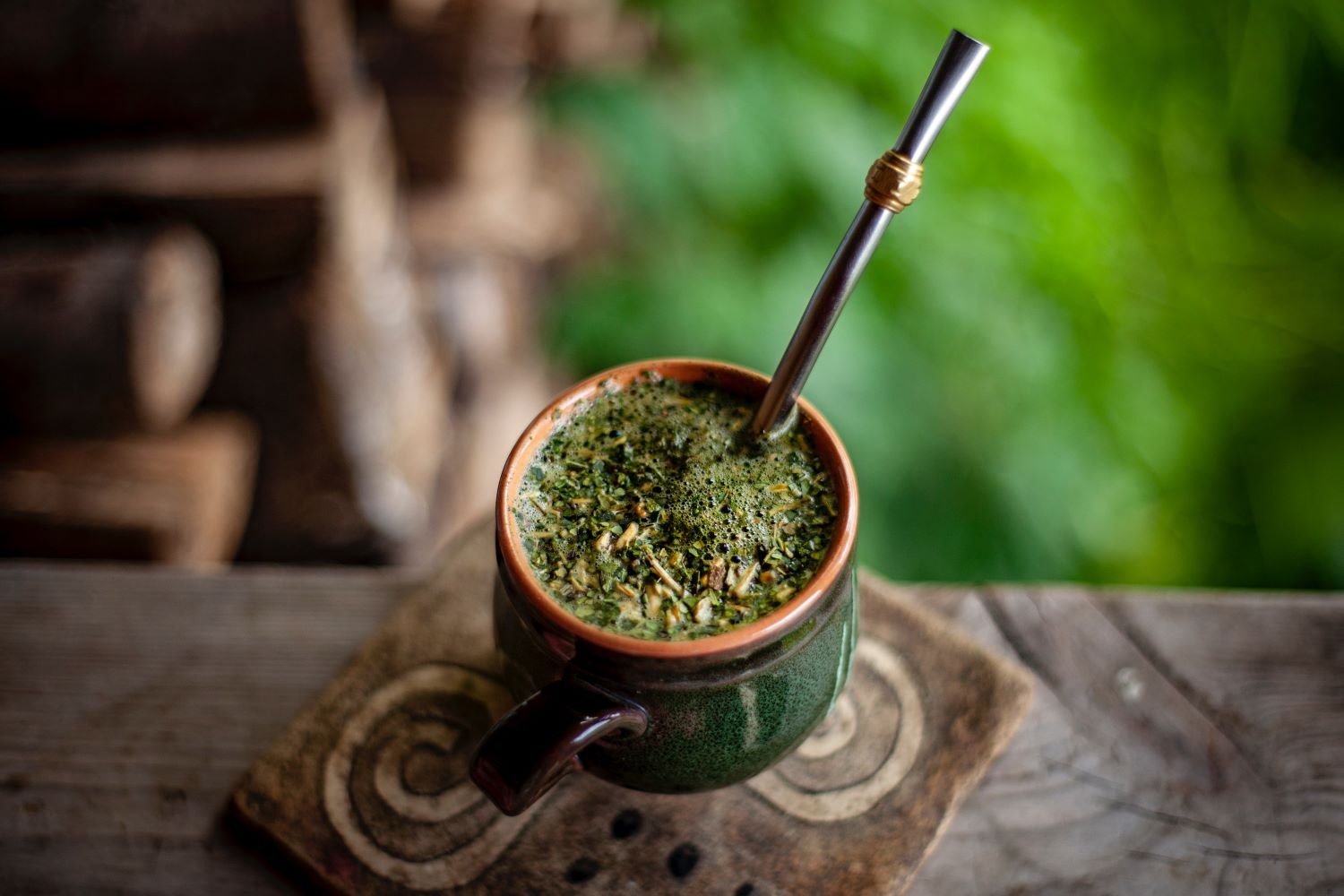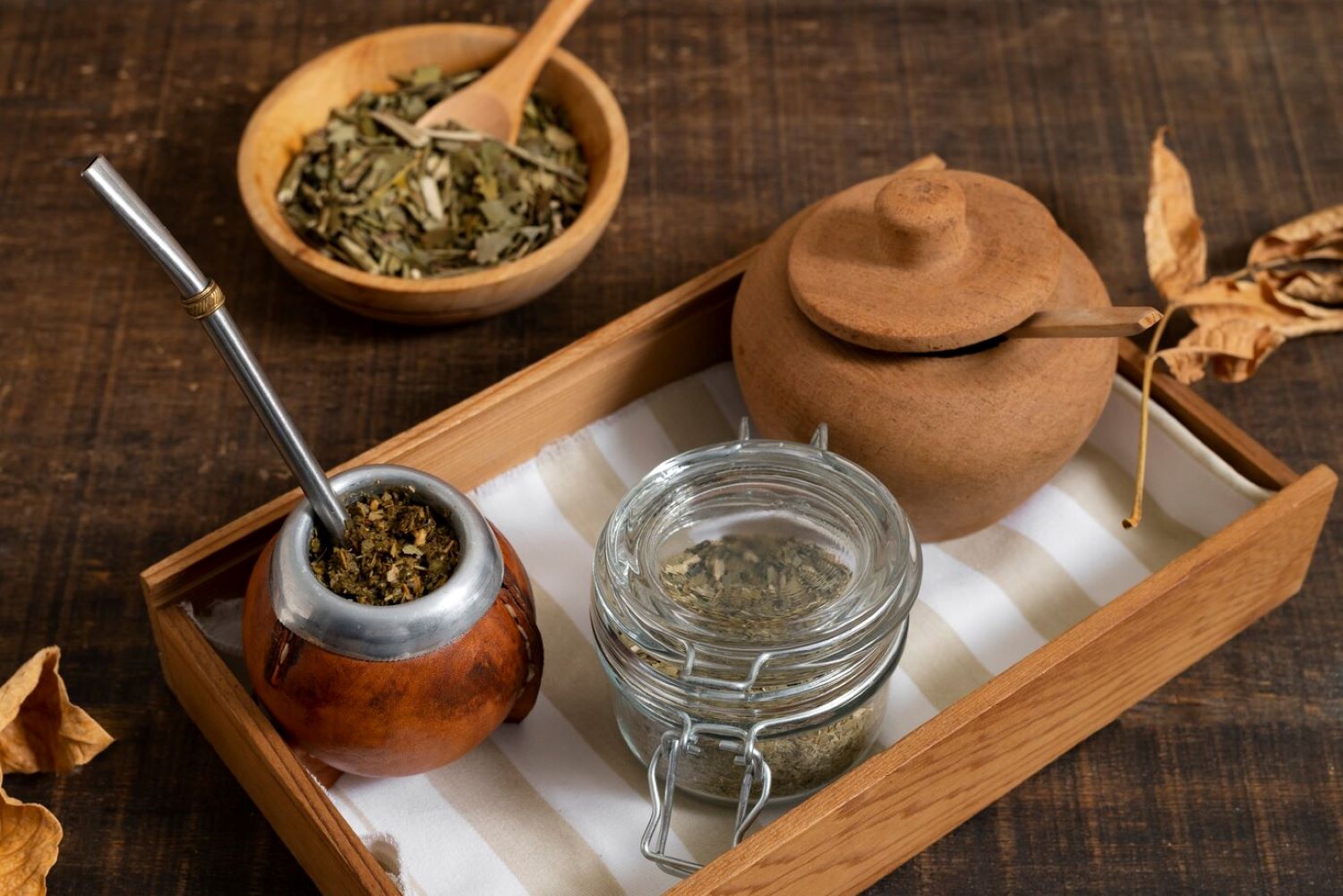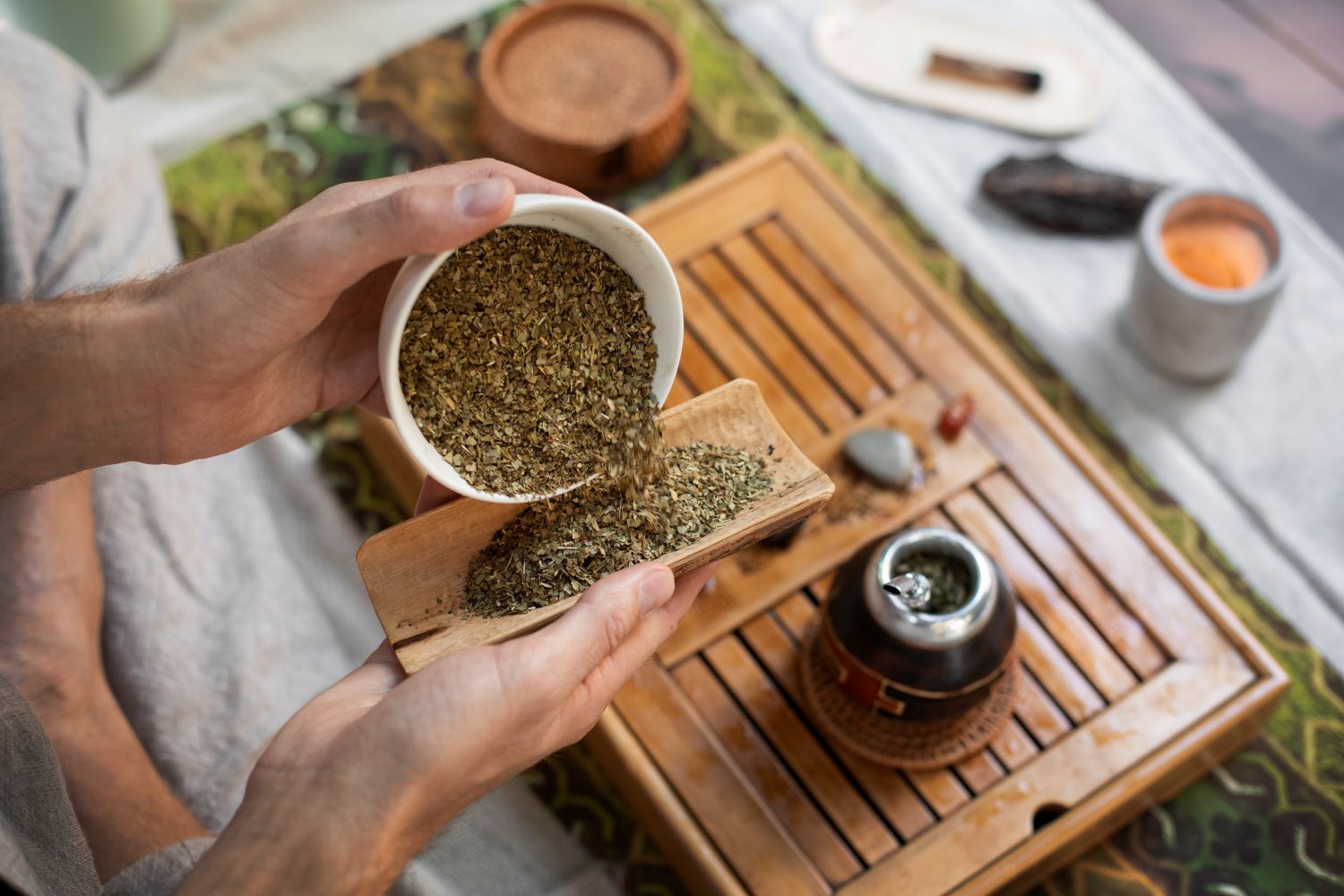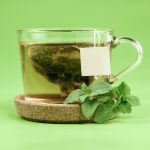Yerba Mate, Chimarrão, and Tereré: the caffeinated drink of South America
Yerba mate is a plant native to South America, known scientifically as Ilex paraguariensis. It is widely consumed in the form of tea or infusion, especially in Argentina, Paraguay and southern Brazil. Originally from the Atlantic Rainforest, it can be consumed in various types of drinks, hot or cold. It is usually used in the preparation of two traditional drinks: chimarrão and tereré.
There are two varieties of Ilex paraguariensisf: Ilex paraguariensis St. Hil variety paraguariensis and Ilex paraguariensis variety vestita. Of the 68 species belonging to the Ilex genus, only 5 are used to make yerba mate.

What is Yerba Mate
The name yerba mate comes from the Quechua term “mati“, which used to refer to the container in which the herb was infused. This herb is harvested by “yerbateros” – growers – from small farms and indigenous communities.
Once harvested, the leaves are dried and ground, placed in a mate and poured over with hot water. Originally, the Guarani used the dried leaves to prepare a stimulating drink called “ka’a“, which means “herb” in the Guarani language.
The history of yerba mate goes back to the indigenous Guarani people, who have inhabited the South American region for thousands of years. For these people, yerba mate is a sacred plant and its consumption is part of their culture and tradition. It was they who discovered the medicinal, energizing and refreshing properties of yerba mate.
Yerba mate is harvested by hand, requiring skill, knowledge, and care. The leaves are harvested when they reach the ideal point of ripeness and go through a drying process to preserve their properties.
With its unique properties and ancestral tradition, yerba mate and the drinks derived from it are appreciated not only for the drink itself, but also for the historical connection with the southern region of Brazil and neighboring countries.
What is Chimarrão and Tereré?
Yerba Mate can be consumed in different ways, either with hot or cold water. In Brazil, it is usually consumed in the form of Chimarrão or Tereré, which are different drinks with similar roots.
Chimarrão is made by infusing Yerba Mate with hot water in a Cuia (gourd) using a Bombilha (chimarrão pump). The Bombilha then serves as a drinking straw. This method better preserves the Yerba Mate’s nutrients. Chimarrão is rich in medicinal and antioxidant properties. In Brazil, it has a brighter, stronger green color than Argentinian yerba mate.
Tereré is the result of infusing Mate with cold water and ice cubes (optional ingredient) in a gourd. It is, in essence, the iced version of Chimarrão. Instead of water, some people use citrus juice. It’s very popular in Paraguay during the summer. Its stimulating and refreshing properties make it an excellent drink to combat the heat.
Of the two, Chimarrão is the most common, especially in southern Brazil, as it is closer to the traditional drink. Some people add a few drops of lemon to these infusions when made with water.
Both drinks are symbols of gaucho culture, rituals of social integration and conviviality. The ritual of sharing a chimarrão or tereré with friends or family is a way of strengthening bonds and promoting conviviality.

The Yerba Mate ceremony and tradition
According to popular legend, the god Tupã responded to the invocation of an old shaman who was looking for a solution for old age and sadness. The god Tupã presented him with yerba mate, which gave him the strength to accompany his tribe. The new drink became a symbol of friendship between warriors and an ally against tiredness and loneliness.
Consumed in groups, shared between friends who took small sips and passed it on to the next, this tradition was passed down through generations. From one community to another, it has become an identity of various Latin American peoples.
One of the first historical records of the consumption of yerba mate dates back to the 16th century, when the Spanish came into contact with the Guaraní, an indigenous people who inhabited the territory where Paraguay is located today. It is known that this plant was banned for consumption in the 17th century by priests and that, after the ban, production decreased drastically. Later, when the missionaries realized that it was not a hallucinogenic herb, they allowed its consumption again.
The Guarani used a hollow gourd, where they prepared the herbs with water. The herbs were not strained, but filtered with their teeth or with a “tacuapi” – the direct ancestor of the bombarilla, which consisted of a bamboo cane. The Charrúa of Uruguay and the Tupí of Brazil also used to chew the leaves.
Yerba mate was once used as currency, as it was so valuable to the communities that consumed it.
Today, the ritual surrounding yerba mate has adopted more contemporary traits. It requires a gourd – or a ceramic container, or similar – a bombilla – a kind of perforated straw that filters the leaves – and a thermos to carry the hot water. The participants sit in a circle and one person fills the gourd with two-thirds of the herbs and a little warm water. The bombilla is inserted at an angle so that it doesn’t get clogged, and finally the rest of the head is filled with hot water. As the gourd is passed between the participants, it is refilled with water. Each round gradually becomes more bitter.
Properties and benefits of Yerba Mate tea
Yerba mate is one of the few plants that naturally contains caffeine. Along with Camellia Sinensis (pure teas), yerba mate is known for its energizing effect. With a bitter taste, it can be compared to matcha green tea.
When drunk slowly, yerba mate tea has a gradual energizing effect. Yerba mate is famous for being as strong and energizing as coffee, as healthy as tea and as tasty as chocolate. A 150ml cup of yerba mate contains around 80 mg of caffeine – almost the same as a cup of coffee.
It is this caffeine that makes mate tea a powerful ally against fatigue, speeding up the metabolism and relieving tiredness. It also releases adrenaline, dopamine, serotonin and various other stimulating neurotransmitters that help improve mood.
In addition, yerba mate tea is packed with various medicinal properties and health benefits. These include bioactive compounds with antioxidant and anti-inflammatory action, which help maintain the health of the pancreas and level blood glucose, as well as preventing bacterial, parasitic and fungal infections.
Some studies also indicate that yerba mate can help in the process of losing and maintaining weight, lowering bad cholesterol and burning fat.

How to make Mate Tea, Chimarrão and Tereré
It is recommended that you drink these beverages from the morning (after waking up) until midday. This recommendation is due to the fact that this tea interferes with the body’s energy when taken too close to the evening. You can drink up to 1 liter of mate tea a day.
Mate tea:
Mate tea can be prepared with either the leaves or the dried branches of the herb, either loose or in sachets. However, loose tea is considered better. It can be consumed hot or cold.
- Water temperature: 100 °C
- 1 tablespoon of yerba mate leaves (roasted or dried)
Preparation with Cabaça:
- Boil water to the recommended temperature.
- Fill the gourd two-thirds or halfway with yerba mate.
- Place your hand on the top of the Gourd and gently shake the inside of the Gourd sideways.
- Remove your hand and place the Bombilha in a free space in the Cuia.
- Finally, add a little cold water and fill the Cuia with hot water. Avoid stirring the mixture.
- To consume Chá Mate, simply drink it through the Bombilla. It is important to avoid preparing the infusion with water that is too hot, so as not to make it bitter.
Preparation with a pot:
- Put a cup of boiling water in a saucepan.
- Once the water is hot, add the yerba mate leaves and cover. Leave to stand for 10 minutes.
- Strain (optional) and drink afterwards.
Chimarrão
Chimarrão is similar to mate tea, but prepared with dehydrated and ground leaves and at lower temperatures.
- Water temperature: 45-50 °C
- 1 liter of water
- 1/2 cup yerba mate
Preparation with gourd (or other container):
- Heat the water until it reaches between 45 and 50 °C.
- Place the yerba mate up to 2/3 of the gourd, cover it with your hand and tilt it so that the yerba is concentrated on one side.
- Then pour a little hot water into the space not occupied by the yerba mate.
- Leave the gourd tilted for about four minutes to fix the yerba mate to the side of the gourd.
- Straighten the gourd again and fill with more water.
- With the top of the gourd covered, carefully insert it into the side opposite the yerba mate.
- Drink and enjoy, ideally with friends.
Tereré
Similar to Chimarrão, but made with cold water, tereré can also include fruit and aromatic herbs to enrich its flavor. It is common to use mint and lemon balm.
- Water temperature: cold
- 1/2 cup of yerba mate tereré;
- 1 liter of water;
- Juice of a citrus fruit (lemon or orange);
- Slices of lemon or orange;
- Ice cubes;
Preparation with a tereré cup (or other container):
- Place the yerba mate in the glass.
- In a thermos, mix the citrus juice, ice cubes, water and lemon or orange slices.
- Add this flavored infusion to the yerba mate and leave to stand for a few minutes.
- Drink and enjoy.
Other yerba mate drinks
In addition to being consumed in the form of traditional tea, yerba mate can be used to prepare different types of drinks, providing unique and refreshing flavors. Here are a few options:
- Mate Gelado: this is the iced version of mate tea, which can be sweetened with honey or sweetener and to which you can add lemon or mint;
- Mate Shake: by mixing milk or yogurt, fruit and yerba mate, you get a refreshing, healthy and delicious shake;
- Cappucino Mate: the energizing combination of coffee and yerba mate is nothing more than a cappuccino infused with yerba mate;
- Matejito: a cocktail based on yerba mate and the traditional Mojito;
Yerba mate is extremely versatile and can be easily combined in various types of drinks and in cooking itself. A little imagination is all it takes to enjoy this herb. With its many health benefits and different ways of preparing it, this plant has won over more and more admirers around the world. Although it doesn’t yet have the traction of Japanese matcha tea or Indian masala chai, its popularity is beginning to grow.
Try it and enjoy the unique flavors that yerba mate can offer!







Pingback:Chá-mate: a bebida tradicional argentina que você precisa conhecer. - fusaocultural.com
Posted at 15:45h, 25 February[…] Suas folhas, com pequenos ramos, contêm cerca de 1 a 2% de cafeína, o que confere ao Chá-mate seu estimulante efeito natural [Saiba mais]. A presença de cafeína faz dela uma das raras plantas além do Camellia Sinensis – a planta do chá convencional – que é amplamente conhecida por essa característica [Saiba mais]. […]